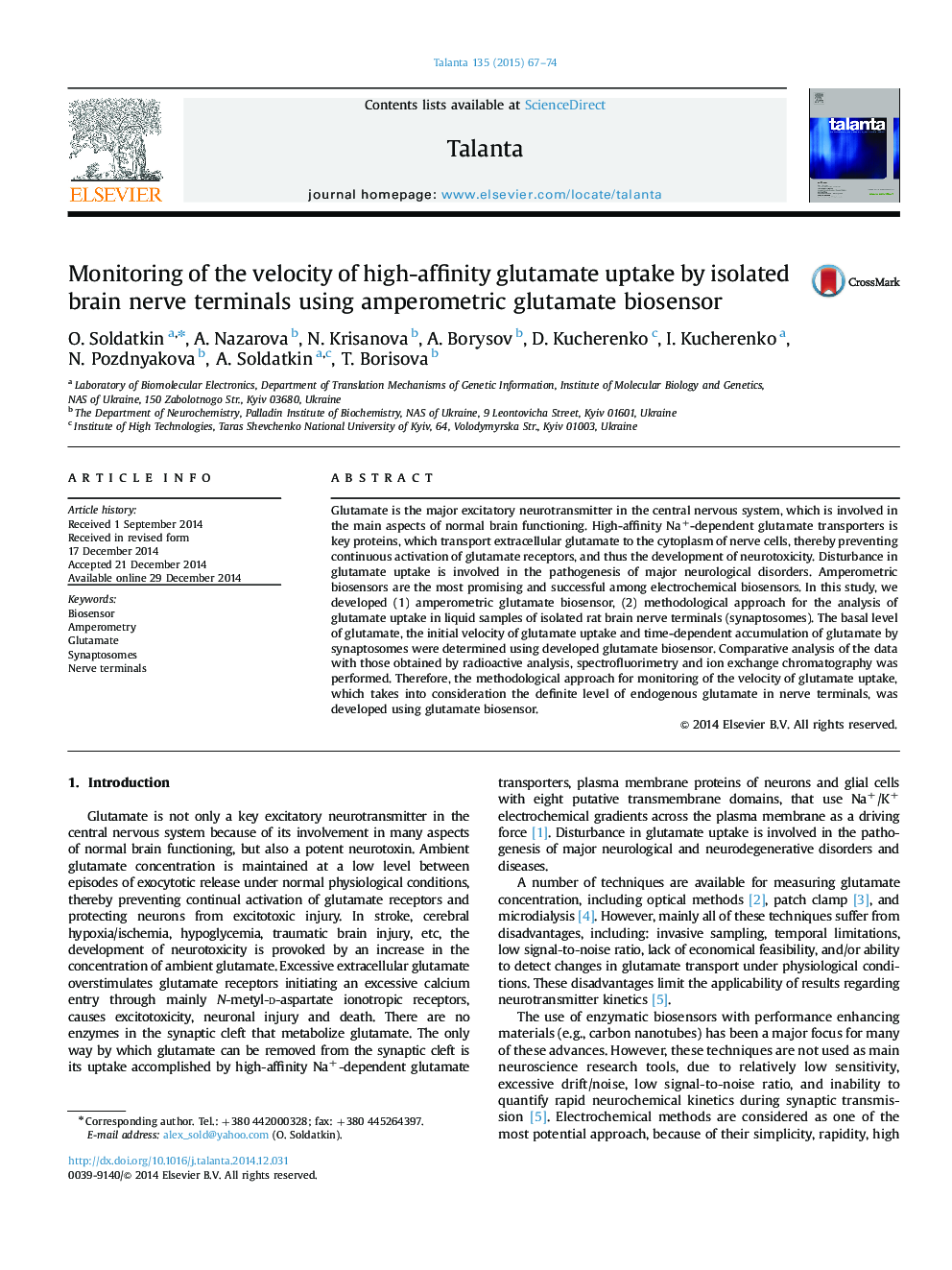| Article ID | Journal | Published Year | Pages | File Type |
|---|---|---|---|---|
| 1241960 | Talanta | 2015 | 8 Pages |
•We developed an amperometric glutamate biosensor based on glutamate oxidase.•Biosensor showed good signal reproducibility, operation and storage stability.•Glutamate was analyzed in liquid samples of isolated rat brain nerve terminals.•Radioactive analysis, spectrofluorimetry, chromatography was used for comparison.
Glutamate is the major excitatory neurotransmitter in the central nervous system, which is involved in the main aspects of normal brain functioning. High-affinity Na+-dependent glutamate transporters is key proteins, which transport extracellular glutamate to the cytoplasm of nerve cells, thereby preventing continuous activation of glutamate receptors, and thus the development of neurotoxicity. Disturbance in glutamate uptake is involved in the pathogenesis of major neurological disorders. Amperometric biosensors are the most promising and successful among electrochemical biosensors. In this study, we developed (1) amperometric glutamate biosensor, (2) methodological approach for the analysis of glutamate uptake in liquid samples of isolated rat brain nerve terminals (synaptosomes). The basal level of glutamate, the initial velocity of glutamate uptake and time-dependent accumulation of glutamate by synaptosomes were determined using developed glutamate biosensor. Comparative analysis of the data with those obtained by radioactive analysis, spectrofluorimetry and ion exchange chromatography was performed. Therefore, the methodological approach for monitoring of the velocity of glutamate uptake, which takes into consideration the definite level of endogenous glutamate in nerve terminals, was developed using glutamate biosensor.
Graphical abstractFigure optionsDownload full-size imageDownload as PowerPoint slide
